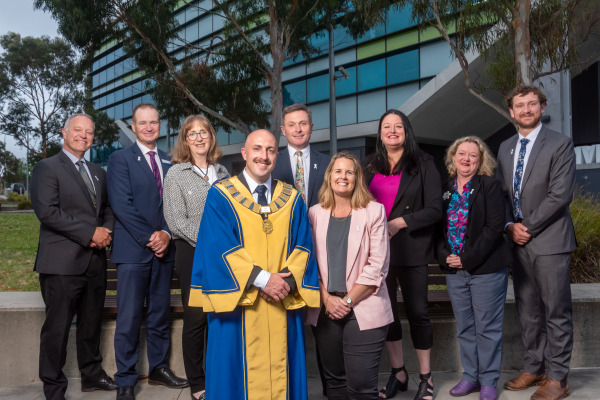8 December 2021 | Two years after the catastrophic 2019/2020 Black Summer bushfires, an environmental group is working with the community to monitor and regenerate mangrove forests which were severely impacted along the NSW South Coast.
This environmental challenge was something the OceanWatch team hadn’t seen before as mangroves don’t usually burn. But with those extreme fires, they did.
OceanWatch and a team of citizen scientists are now monitoring the mangroves to start the process of nursing them back to health, with the help of a $63,000 grant from the Landcare Led Bushfire Recovery Grants Program.
Mangroves serve as a habitat for thousands of species of marine and land creatures, and are essential for a balanced aquatic ecosystem.
During the bushfires, sections of mangrove forest around Batemans Bay, a coastal town 285 km from Sydney, were effectively cooked by the heat of the intense fires, killing off trees and destroying habitat. Where healthy mangroves had once thrived, all that remained were skeleton trees that caused bait fish to move offshore, and sediment leading to poor water quality for local oysters.
Seeing the damage first hand, oyster grower Kevin McAsh invited OceanWatch to view the burned landscape for themselves, and put together a plan to regenerate the mangroves. Dr Claudia Santori, OceanWatch spatial project officer, visited the area early in 2021 to inspect the trees damaged by the bushfires along the Clyde River and at Mogendoura Creek.
“Even a year after bushfires had torn through the landscape, sections were not regenerating naturally. This is because of the tidal nature of mangroves, and though the trees produce many seeds, they don’t always land somewhere they can fix onto, or the seeds aren’t viable,” she said.
“The first part of our program was to observe the impacted sites to understand how mangroves regenerate. Part of this observation is the training of on-ground citizen scientists who can monitor progress. This data will be used to shape an action plan catered for each section of the mangroves.
We need to show the extent of the damage and the limited ability of the mangroves to regenerate on their own, so we can get the permits we need to revive the mangroves as they are on public land,” she added.
Once permits and data are in hand, Dr Santori said there are several ways the group can aid the mangroves.
“Some actions are passive, like signage and talking to landowners to keep them off the mangroves as they regenerate, while others are more active, requiring hand planting of seedlings or even dropping them from a modified drone,” she said.
An issue was the difficulty in managing regeneration when mangroves varied and don’t respond to the same techniques.
“The challenge with mangroves is there is no one-size-fits-all approach. Some mangroves are muddy; others sandy, so the data we collect will guide us for the best approach for the section being regenerated,” Dr Santori said.
OceanWatch expects to complete their observation work by the end of the year, with regeneration work to be completed by April 2022. The hope is by training locals in mangrove monitoring they can continue to care for the mangroves for years to come.
The $14 million Landcare Led Bushfire Recovery Grants Program is supporting projects in regions impacted by the Black Summer bushfires of 2019-20, and has been funded by the Australian Government’s Bushfire Recovery Program for Wildlife and their Habitat.
More info here: https://landcareledbushfiregrants.org.au/
Available








